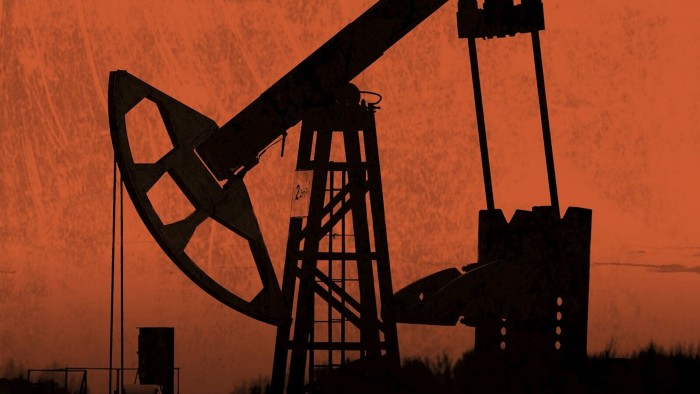The big call for investors is energy

Roula Khalaf, Editor of the FT, selects her favourite stories in this weekly newsletter.
The writer is a financial journalist and author of ‘More: The 10,000-Year Rise of the World Economy’
If 2022 has demonstrated anything, it is that the abundance, and price, of energy is vital for the health of the global economy.
The Industrial Revolution that emerged in the 18th century had many causes but the necessary precondition was the replacement of human and animal power with a carbon-based fuel in the form of coal. In the 19th and 20th centuries, the global economy was transformed by the use of oil in transport and elsewhere and by the harnessing of electricity.
In the modern era, the post-1945 recovery in Europe and the US was assisted by a quarter-century of cheap oil. The lurch into stagflation in the mid-1970s was associated with the quadrupling of oil prices by Opec in 1973 and the 1980s rebound coincided with another slump in the crude price. Finally, there was a further surge in the oil price before the financial crisis of 2007-09.
The current climate combines both a sharp increase in energy prices with a restriction in supply, in the form of reduced Russian gas exports to western Europe. If that is an echo of the 1970s, so too is the current combination of a spike in inflation and a sluggish economic performance.
Some of this volatility is linked to the concentration of energy resources within the borders of authoritarian, and occasionally hostile, nations in Russia and the Middle-East. One can view this as a geopolitical quirk — a variation of the “resource curse”. If a country has energy reserves, this creates the potential for a dictatorial regime to seize those reserves and maintain itself in power.
All this means that any attempt to take a long view of the prospects for markets, or the economy, must take account of the likely course of energy prices and the nature of its supply. Encouragingly, history suggests that, in the medium term, energy price peaks sow the seeds of their own destruction. Either demand adjusts (for example, consumers switched to more fuel efficient cars after the 1970s) or producers are inspired by high prices to find new sources of supply (such as shale oil and gas).
But the current crisis has struck when the world is trying to grapple with a different problem: climate change. And many nations have set ambitious targets for reducing their dependence on fossil fuels by the middle of the century. This policy will require remarkable shifts in the way the world organises its economy.
In his book How the World Really Works, energy expert Vaclav Smil points out that modern food production depends heavily on fossil fuels, particularly through the nitrogen-based fertilisers that have enhanced crop yields. As a result, the world has gone from supplying adequate food to about 890m people in 1950 to 7bn people in 2019.
It would not be possible to feed so many people with an agricultural sector dependent on the recycling of organic waste. Switching from meat-based to vegetarian diets might help a bit. But some plants, such as tomatoes grown in heated greenhouses, have very high energy requirements.
Smil also points to the extensive energy used to manufacture plastics (essential for the healthcare industry, and many others) and to produce the steel and concrete which are essential for infrastructure. Wind turbines may offer an alternative to fossil fuels as a source of power. But their foundations are built of concrete, the towers and rotors are made from steel and the blades are manufactured from plastic resin.
All this may explain why politicians are so quick to make promises for a reduction in fossil fuel usage by some far-off date and so slow to push through practical measures to cut fossil fuel consumption immediately.
Even willing governments struggle to make a dent in the problem. Despite an extensive programme of renewable energy production, Smil writes that the share of fossil fuels in Germany’s primary energy supply has only declined from about 84 per cent in 2020 to 78 per cent today. Even after all the international protocols and summits, global fossil fuel consumption rose by 45 per cent in the first two decades of the 21st century, thanks largely to China’s economic growth.
Even if the technical challenges of converting to new forms of energy could be overcome, the upfront capital investment will be enormous. And there is a vigorous debate over whether the new energy sources will be more “efficient” (in terms of the energy return on energy invested) than the old. In short, the economic impact of an attempt to shift to net zero carbon emissions could be huge.
Investors cannot afford to ignore this issue. But they must make the tricky calculation of whether governments will attempt to comply with their carbon emission targets or retreat in the face of hostile voters. And if governments resile from their promises, investors must then calculate how much the harm caused by climate change (crop failures, flood damage, disputes over scarce water resources) will dent economic growth. Getting the energy call right is the big long-term decision.
Climate Capital

Where climate change meets business, markets and politics. Explore the FT’s coverage here.
Are you curious about the FT’s environmental sustainability commitments? Find out more about our science-based targets here
Letter in response to this article:
Oil crisis of 1973 teaches us a lot about energy saving today / From Andrew Warren, Chairman, British Energy Efficiency Federation, Cambridge, UK
Comments